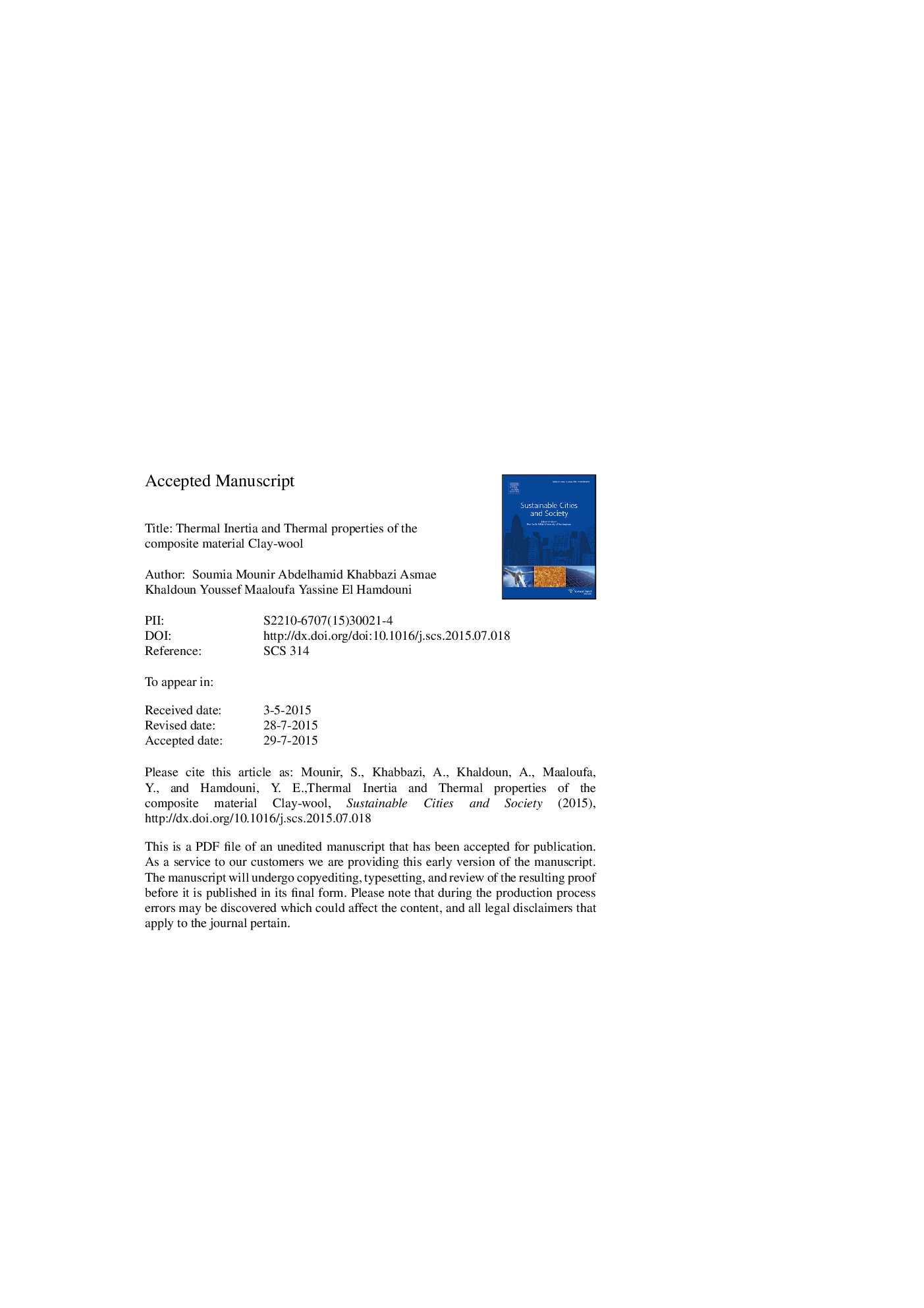| Article ID | Journal | Published Year | Pages | File Type |
|---|---|---|---|---|
| 6776266 | Sustainable Cities and Society | 2015 | 32 Pages |
Abstract
Developing ecological insulation of unfired building materials will not only reduce energy consumption of bill houses but will assure also sustainability, especially for Bensmim region which is a poor area, cold and the main activity of its inhabitant is the elevation of sheep, so the wool is a very abundant and affordable material. For this purpose, a series of experimental studies were performed on the composite clay-wool in different percentage of wool. The first step in this work is the physic-chemical characterization of clay using the fluorescence X method. The second step is the thermal characterization of clay alone and the composite clay-wool using the asymmetrical hot plate and flash methods. The third step in the work is the verification of thermal conductivity using different theoretical models. The fourth step in this work is the study of thermal Inertia of different wall's thickness of the materials: clay, clay-3%wool and clay-5%wool. By asserting all of the depth of heat flow diffusion, the delay of temperatures, the delay of heat flow density and the damping factor for different wall's thickness for the three materials. The obtained results indicate that those developed composites show off interesting characteristics in term of insulation and thermal Inertia. Those results attend above 11Â h of delay on (temperature, heat flow density), 0.27 of damping factor and 0.19Â WÂ mâ1Â kâ1 of thermal conductivity. Also, a comparison of heating energy need was conducted to a whole building model demonstrating that the composite clay-wool presents the best energy efficiency of envelope building.
Related Topics
Physical Sciences and Engineering
Energy
Renewable Energy, Sustainability and the Environment
Authors
Soumia Mounir, Abdelhamid Khabbazi, Asmae Khaldoun, Youssef Maaloufa, Yassine El Hamdouni,
